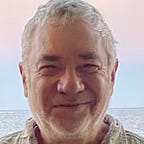San Francisco is Really Weird. But Not Only the Way You Think.
San Francisco is different from other places. The city developed its lawless and wild reputation from its very founding when thousands of prospectors arrived at this former mission outpost during the Gold Rush of 1849 — along with prostitution, gambling, and crime. From that notorious beginning, San Francisco has long been celebrated for its diversity and for attracting outcasts from everywhere else: beatniks in the 1950s, hippies in the 1960s, and people of all sexual orientations and identities pretty much always.
Perhaps less well known is that San Francisco has also always attracted money. Alas, the people who made money in the Gold Rush and then the Silver Rush generally were not the common prospectors but the bankers who financed them and the entrepreneurs who sold them provisions. Some became fabulously wealthy, while most prospectors went home broke.
Among the familiar locals from this era were Henry Wells and William Fargo, who founded not only the namesake Wells Fargo & Company but also American Express and made their fortune providing banking services and transporting gold. Another celebrated name from this era: Levi Strauss, who operated a dry goods business and famously sold denim pants.
Charles Crocker, Mark Hopkins, Collis Huntington, and Leland Stanford — all successful San Francisco businessmen from the 1850s — went on even greater wealth when they combined forces to create the Central Pacific Railroad. The list goes on. In fact, San Francisco has long reigned as the financial capital of the west coast, home to leading banks like Wells Fargo and Bank of America, but also Crocker Bank and Bank of California, as well as the Pacific Stock Exchange.
The Attack of the Billionaire Class
So, San Francisco is no stranger to extreme wealth. But even with this history, it is still surprising — even shocking — to learn just how many billionaires reside within its 49 square miles. And by “billionaires,” I’m not referring to San Francisco’s famously annoying tech bros who have made a few million dollars in stock options. And I’m not using the term as a metaphor, like so many politicians when referring to the kind-of-rich one-percenters. The top 1% of U.S. households have an average net worth of about $11 million. That’s wealthy, by any reasonable standard, but that’s not billionaire mega-yacht rich.
No, I mean literally billionaires — people with net assets of over a billion dollars — which is a whole nother animal. And it turns out that San Francisco has a huge concentration of these phenomenally rich people.
There are only 716 billionaires in the United States, according to a new report by the Hurun Research Institute. That’s double the number at the beginning of this new millennium, as per a different source, but still a relatively rare species in a nation with almost 333 million people. (All figures as of 2021.) That’s one for every 465,000 people in the country. So very uncommon.
But like I said, San Francisco is different. Way different. The Hurun Research Institute reports that little San Francisco, with only 884,000 residents, has 62 of these billionaires. That’s one for every 14,000 people in the city. If you’re keeping score, the “billionaire frequency index” (to coin a phrase) is 36 times higher in San Francisco than in the rest of the nation.
And San Francisco is not just unusual relative to the United States. It’s positively freakish on a global scale. The Hurun Report says that San Francisco has the ninth greatest number of billionaires in its midst of any municipality on the planet. According to World Population Review, San Francisco ranks as just the 659th most populous city in the world. So, the city is punching way, way above its weight class, billionaire-wise.
Here’s what that looks like when we adjust the total number of billionaires in each of the top ten cities for their population size. In this graph, the number of billionaires in each city is shown on the vertical axis, and the size of the sphere indicates the population size. The population-adjusted number of billionaires is shown on the horizontal access.
Almost all the cities clustered are on the left side of the graph, indicating they all have between 3.4 (Mumbai) and 13.4 (New York) billionaires per million residents. And then there’s San Francisco by itself all the way over on the right with 70 billionaires per million residents. No other city comes close.
It’s not just the density of billionaires that’s different. Excluding San Francisco, the other nine leading “billionaire cities” average 14.4 million people — 16 times larger than San Francisco. Indeed, San Francisco is the only city with less than a million residents; the next smallest city on the list is Hong Kong, with 7.6 million people, almost nine times larger than San Francisco.
It only makes sense that most of these billionaire cities are very large. Great wealth is typically produced in major commerce centers, so we should expect relatively more billionaires to be created and congregate in the largest commercial cities, which they generally do. Except for San Francisco.
The Pandemic Exodus
What about the exodus of techies and other people of means during Covid-19? Freed of the need to go into an office every day, many San Franciscans moved away. The U.S. Census Bureau reports that almost 60,000 people left the city between April 2020 and July 2021, or 6.7% of its pre-pandemic population.
Not the billionaires. The number of resident billionaires actually grew by six last year. Given the strong run-up in stock and other asset values during the pandemic, that increase in local billionaires likely was due to more household fortunes crossing the billion-dollar threshold, rather than more billionaires moving into the city. Looks like San Francisco won’t be losing its billionaires — or its reputation for being different — anytime soon.
